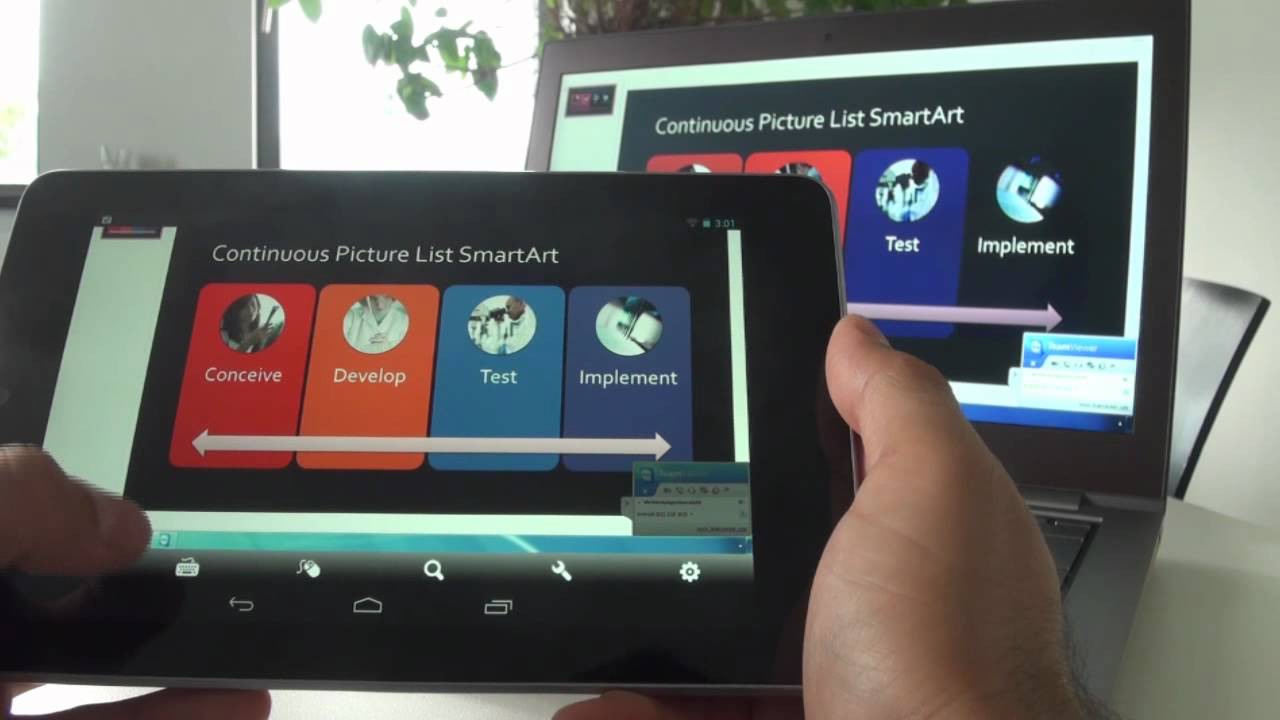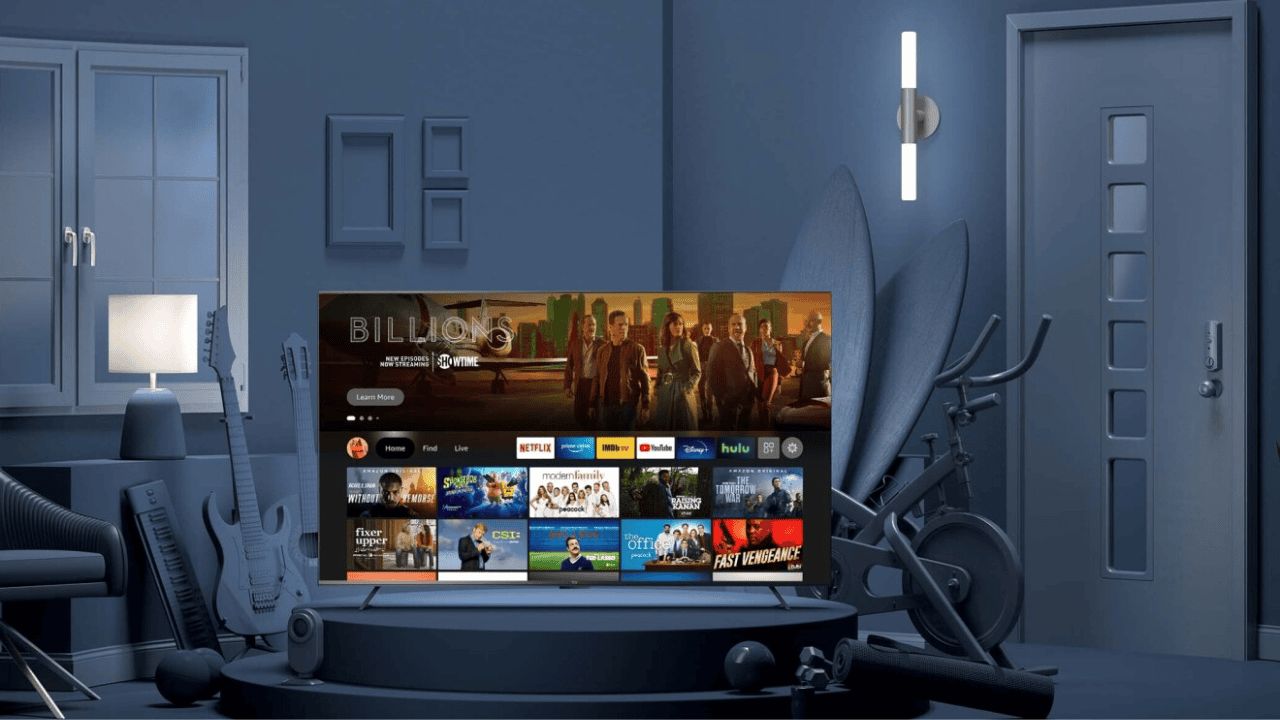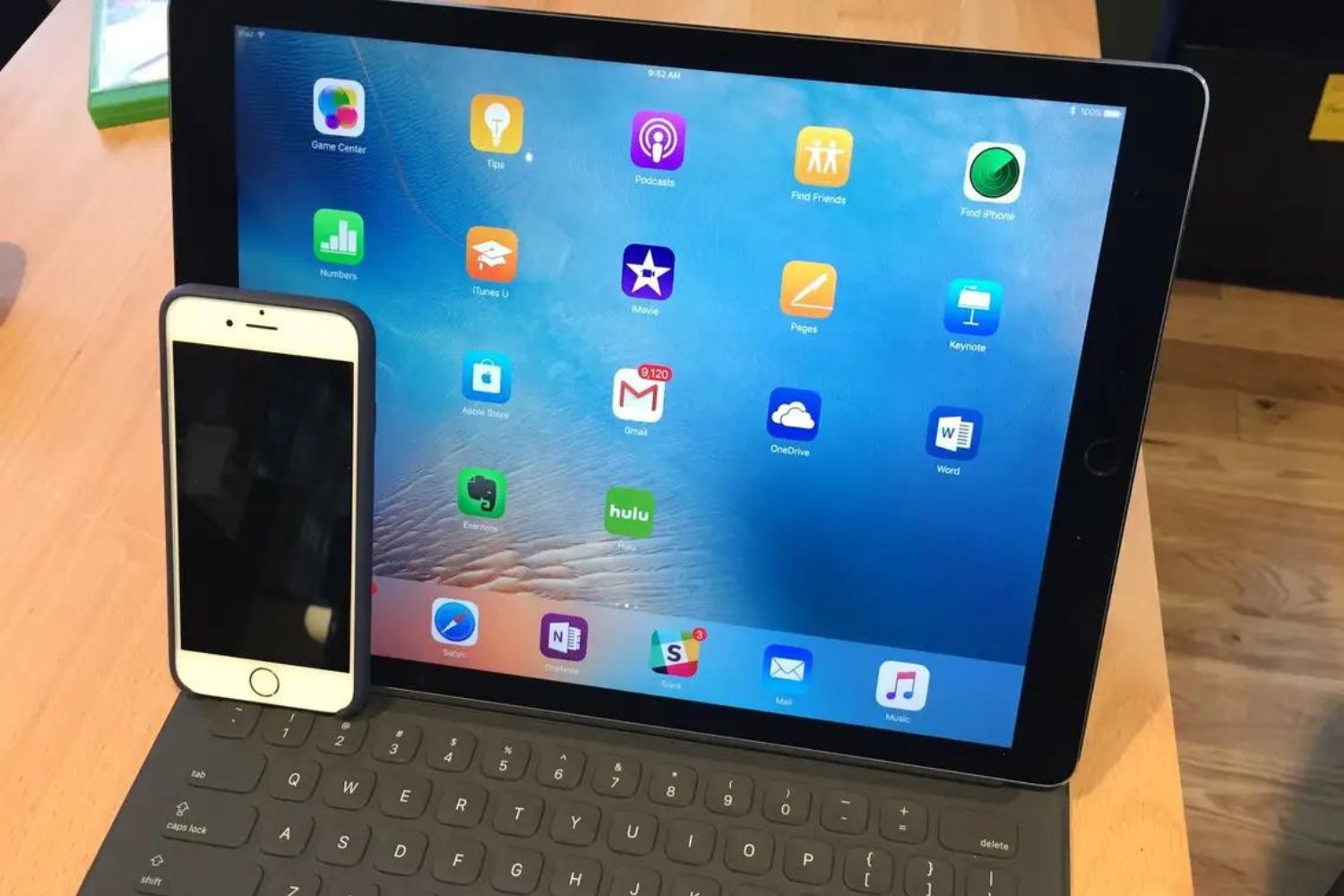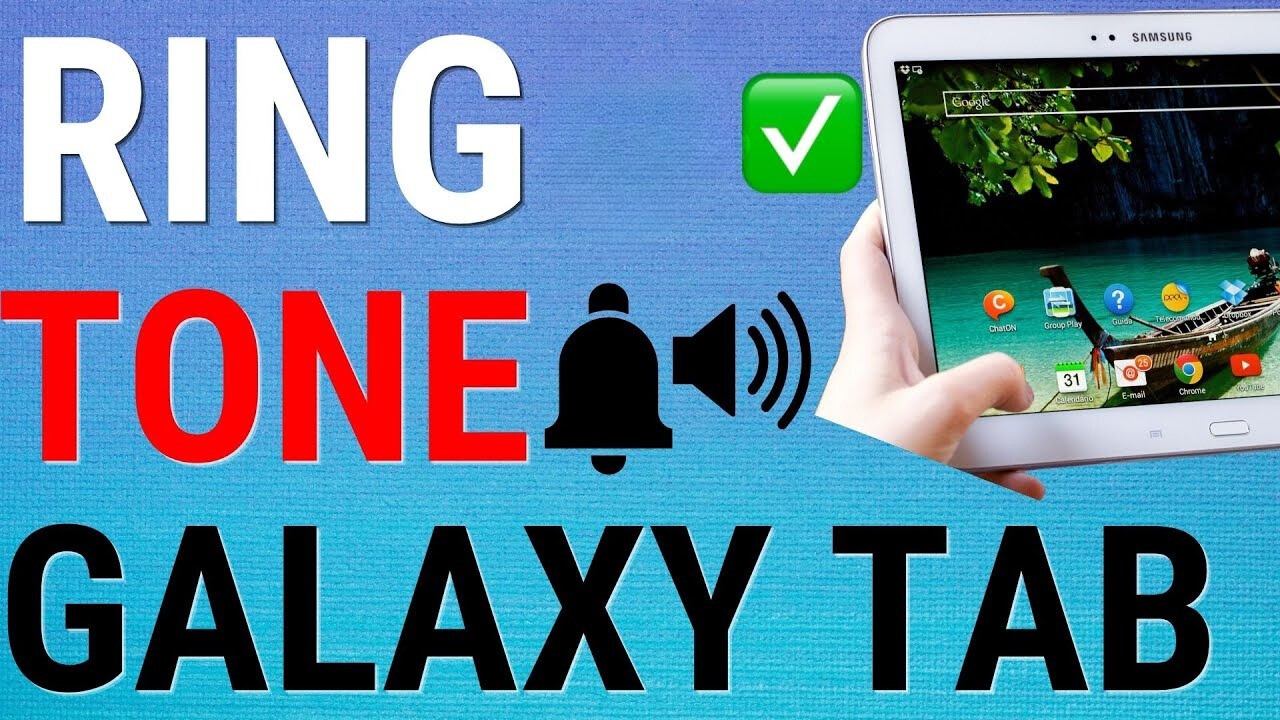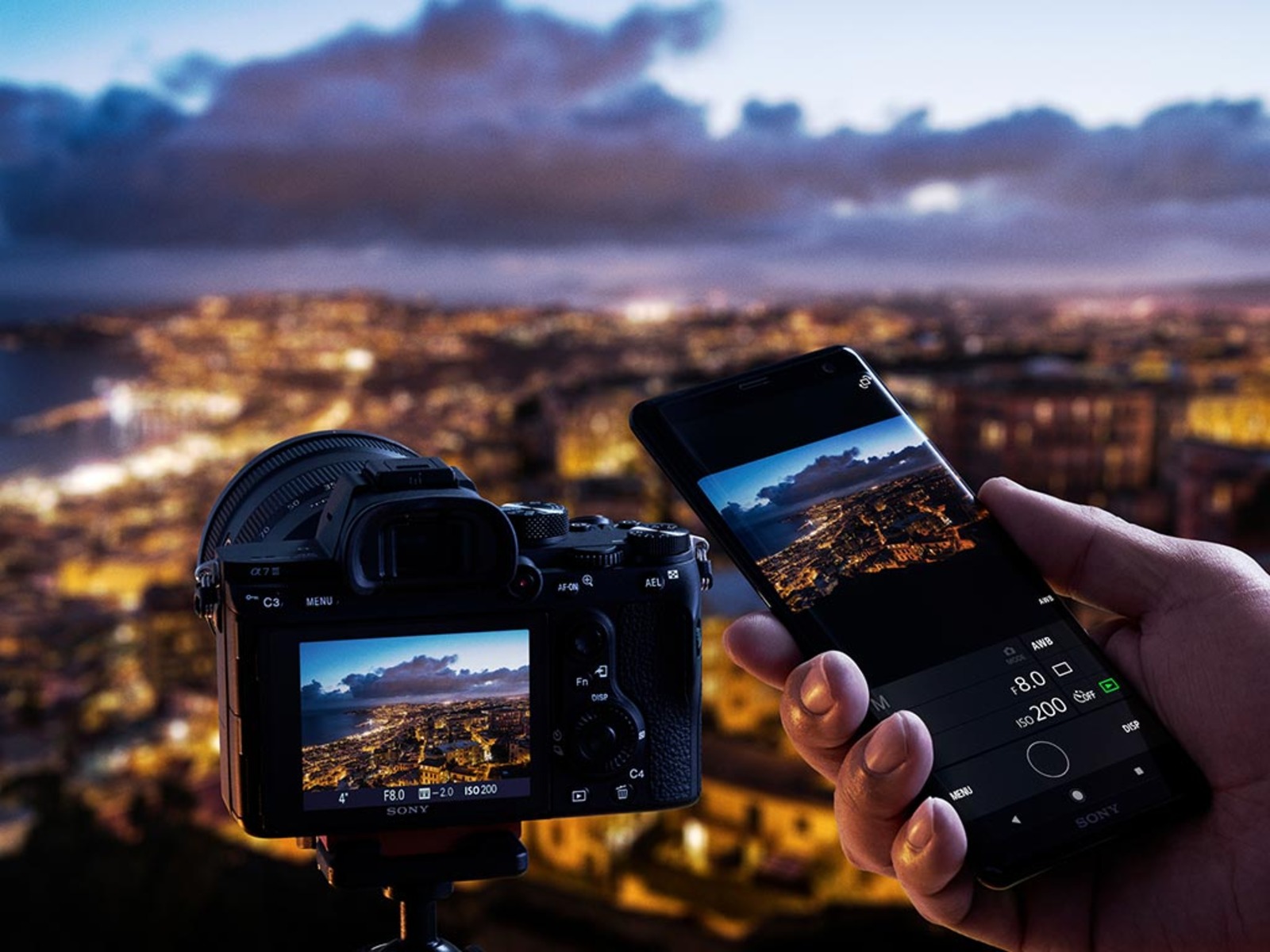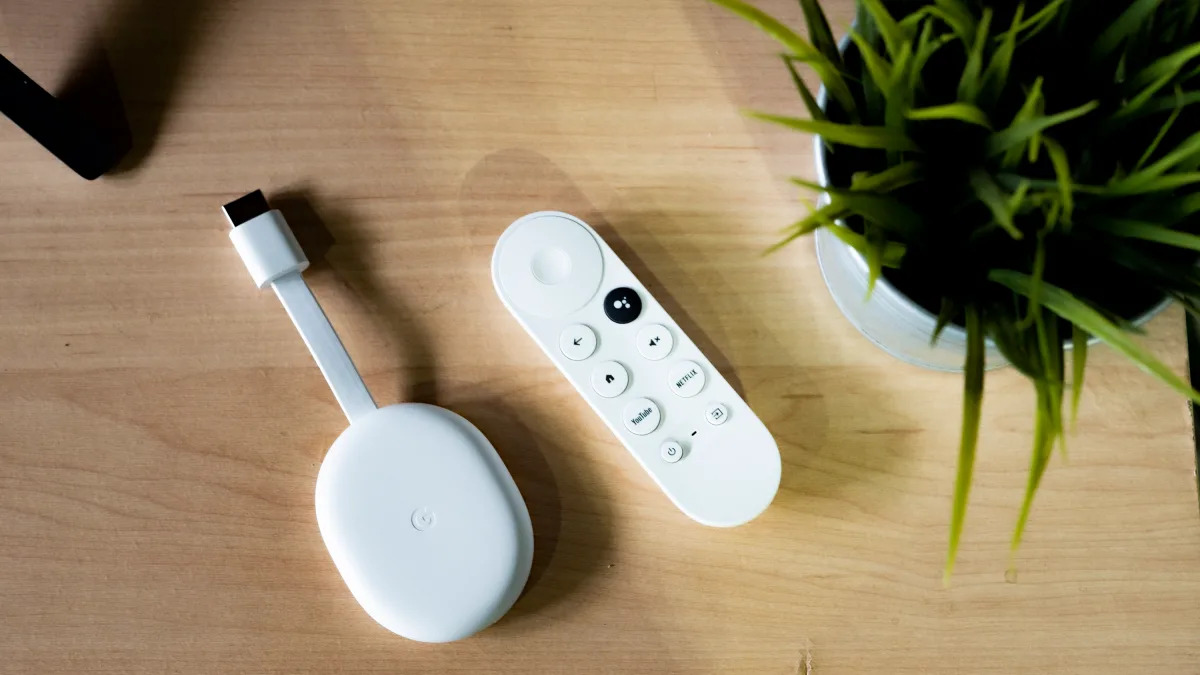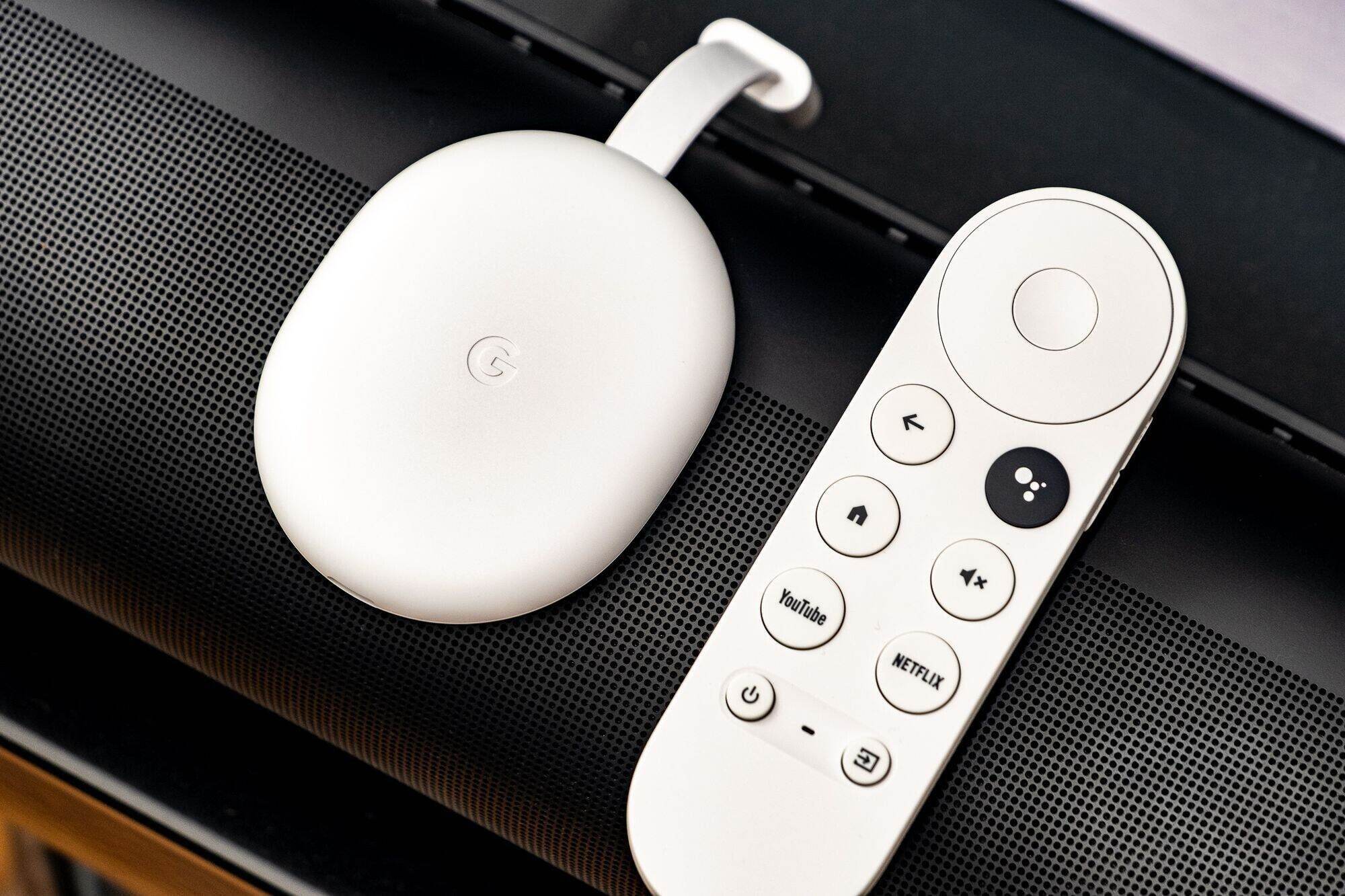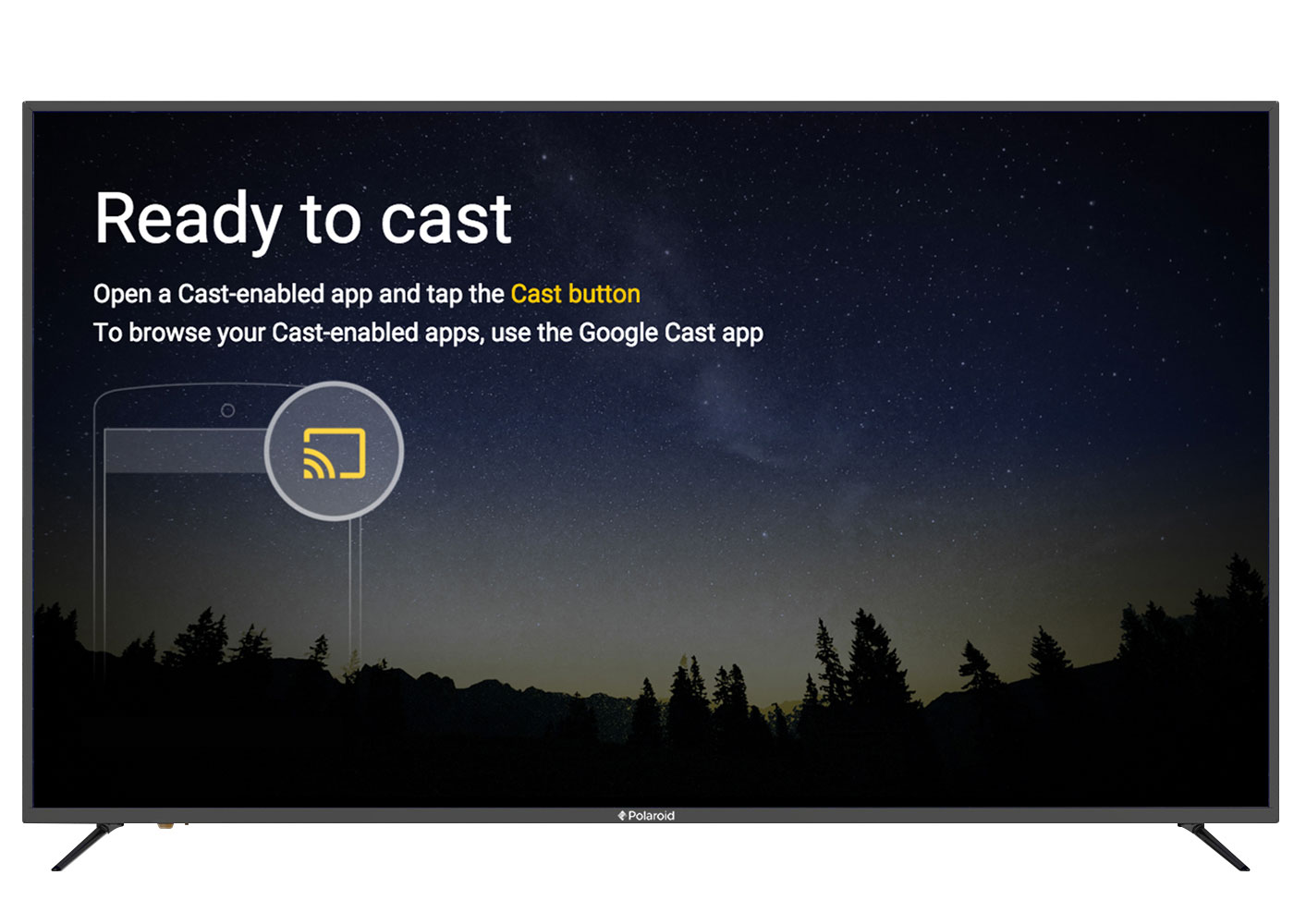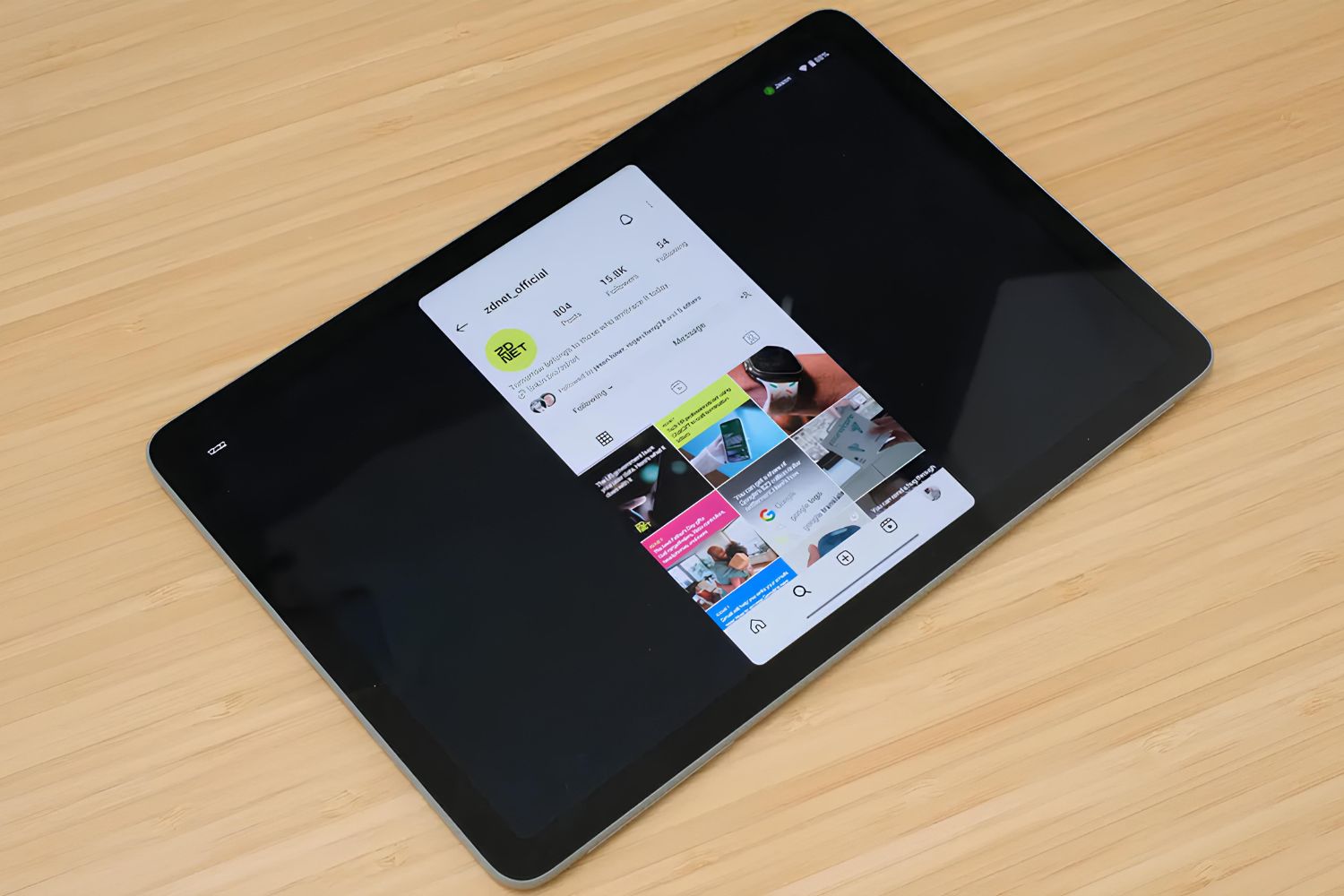Introduction
Have you ever wished you could control your tablet with just a few taps on your phone? Well, your wish can now become a reality! Thanks to the advancements in technology, it is now possible to seamlessly control your tablet using your smartphone. This innovative feature not only adds convenience to your daily routine but also enhances your overall user experience.
In this article, we will explore how to control your tablet with your phone, and all the amazing possibilities it brings. Whether you need to navigate through your tablet’s interface, control media playback, type and input text, transfer files between devices, or even remotely access and control your tablet, we have got you covered. We will guide you step-by-step on how to connect your phone and tablet, and provide troubleshooting tips along the way.
So why would you want to control your tablet with your phone in the first place? There are several benefits to this seamless integration. Firstly, it offers convenience. Instead of constantly switching between your phone and tablet, you can now control your tablet with just a few taps on your phone’s screen. This saves you time and makes for a much smoother user experience. Additionally, it allows for improved multitasking. You can easily switch between apps on your tablet while using your phone simultaneously. This is especially useful for professionals who need to access multiple applications and documents on different devices.
Compatible devices and apps play a crucial role in this integration. Ensure that your phone and tablet are compatible with each other and have the necessary software or apps installed. Most recent Android and iOS devices come with built-in features or third-party apps that enable this functionality. Check your device’s settings or app stores for options specific to your device.
In the following sections, we will walk you through the process of connecting your phone and tablet, as well as provide guidance on how to navigate your tablet’s interface, control media playback, type and input text, transfer files, and even remotely access your tablet. So, let’s dive in and discover the fascinating world of controlling your tablet with your phone!
Why would you want to control your tablet with your phone?
Controlling your tablet with your phone offers a range of advantages and practical uses that can greatly enhance your digital experience. Here are a few reasons why you might consider utilizing this feature:
- Convenience: Imagine being able to control your tablet from the comfort of your couch or bed without having to physically interact with it. This feature allows you to navigate your tablet’s interface, access apps, and perform various tasks with ease using just your phone.
- Enhanced multitasking: By controlling your tablet with your phone, you can effortlessly switch between different apps and documents on both devices. This is particularly beneficial for professionals who need to stay organized and access information quickly across different platforms.
- Improved accessibility: For individuals with disabilities or limited mobility, controlling a tablet with a phone can provide a more accessible means of interacting with digital content. The ability to use a familiar device like a smartphone can make tasks easier and more comfortable.
- Effortless media playback: One of the most popular reasons people utilize this feature is for controlling media playback on their tablets. Whether you want to play or pause a video, adjust the volume, or skip to the next track, using your phone as a remote control offers a seamless and intuitive experience.
- Remote access: Another advantage of controlling your tablet with your phone is the ability to remotely access and control your tablet from a distance. This comes in handy if you need to access important files, check notifications, or perform tasks on your tablet when you’re not in close proximity to it.
Whether you’re looking for convenience, enhanced productivity, accessibility, or simply the ability to control media playback, using your phone to control your tablet opens up a whole new realm of possibilities. It streamlines the way you interact with your devices, providing a more efficient and enjoyable user experience.
In the next section, we will explore the compatible devices and apps required to establish this connection between your phone and tablet. So let’s move forward and discover how to make your devices work seamlessly together!
Compatible devices and apps
Before you can control your tablet with your phone, it’s important to ensure that both devices are compatible and have the necessary apps or features to establish a seamless connection. Here are some factors to consider:
- Operating Systems: The first thing to check is that both your phone and tablet are running on compatible operating systems. Most recent Android and iOS devices offer built-in features that allow for device mirroring and control. Make sure your phone and tablet are running on supported versions of their respective operating systems.
- Manufacturer Compatibility: While device compatibility can vary, most Android devices and recent iOS devices will have the necessary features for controlling your tablet with your phone. However, it’s always a good idea to check with the manufacturer or device specifications to ensure compatibility.
- Third-Party Apps: If your phone or tablet does not have built-in features for controlling your tablet, you can explore third-party apps that offer similar functionality. Both Google Play Store and Apple App Store have a wide range of apps available for this purpose. Some popular apps include Remote Link, Unified Remote, and TeamViewer.
- Network Connectivity: To establish a connection between your phone and tablet, they need to be connected to the same Wi-Fi network or paired via Bluetooth. Ensure that both devices are connected to the same network or paired correctly for seamless communication.
It’s important to note that the availability of specific features or apps may vary depending on the device’s model, operating system version, and region. Always refer to the device’s official documentation or support resources for detailed instructions on compatibility and setting up the necessary connections.
In the next section, we will provide step-by-step guidance on how to connect your phone and tablet, so you can start enjoying the freedom of controlling your tablet with your phone. Let’s dive into the next exciting phase!
How to connect your phone and tablet
Connecting your phone and tablet is the first step to controlling your tablet using your phone. The process may vary depending on your device’s operating system and settings, but here are the general steps to establish the connection:
- Check compatibility: Ensure that both your phone and tablet are compatible and running on supported operating systems. Refer to the device’s documentation or support resources for specific compatibility details.
- Connect to the same network: Make sure both devices are connected to the same Wi-Fi network. This is typically required for seamless communication between the phone and tablet. If you prefer to use Bluetooth, ensure that both devices are paired correctly.
- Enable device mirroring: On your tablet, navigate to the settings menu and look for options related to device mirroring, screen sharing, or remote control. Enable these options to allow your phone to connect and control your tablet.
- Download necessary apps: If your device does not have built-in features for controlling your tablet, download and install a compatible third-party app from the app store. These apps often provide the necessary tools and interface to establish the connection between your phone and tablet.
- Launch the app on both devices: Open the app on both your phone and tablet, following the installation instructions provided by the app. Depending on the app, you may need to pair the devices or enter a unique code to establish the connection.
- Follow on-screen instructions: Once the app is launched on both devices, follow any on-screen instructions to complete the connection setup. This may involve accepting permissions, confirming device pairing, or entering additional information.
- Test the connection: After the connection is established, test the connection by performing basic functions such as navigating your tablet’s interface or controlling media playback. Ensure that the controls on your phone are communicating effectively with your tablet.
It’s important to note that the specific steps and options may vary depending on the device and the app being used. Always refer to the app’s documentation or support resources for detailed instructions on connecting your phone and tablet.
In the next sections, we will explore how to navigate your tablet, control media playback, type and input text, transfer files, and even remotely access your tablet, all from the comfort of your phone. Let’s dive deeper into these exciting possibilities!
Navigating your tablet from your phone
Controlling your tablet’s interface from your phone opens up a whole new level of convenience and flexibility. Here’s how you can navigate your tablet using your phone:
- Launch the control app: Open the app on your phone that allows you to control your tablet. This app will provide you with a virtual interface to interact with your tablet’s screen.
- Establish the connection: Follow the necessary steps to connect your phone and tablet, as outlined in the previous sections.
- Select your tablet: Once the connection is established, select your tablet from the list of available devices on your phone’s app. Confirm the connection to establish control.
- Use virtual controls: The control app will provide you with virtual controls that replicate the functionality of your tablet’s physical buttons and gestures. You can use these controls on your phone’s screen to navigate through your tablet’s interface.
- Tap and swipe: To mimic tapping and swiping actions on your tablet, simply tap or swipe on the corresponding areas of your phone’s screen. The control app will transmit these actions to your tablet, replicating the input accordingly.
- Access apps and settings: Using the virtual interface on your phone, you can access any app or settings on your tablet. Simply tap on the app icons or navigate through the settings menu just as you would on your tablet.
- Switch between apps: If you want to switch between different apps on your tablet, use the multitasking or app switcher feature available in the control app. This allows you to seamlessly transition between different applications, just like you would on your tablet itself.
- Control gestures: Some control apps offer additional features like gesture control. With gesture control, you can perform specific actions on your tablet by drawing gestures on your phone’s screen. This can include actions like pinch-to-zoom, swiping with multiple fingers, or rotating the screen orientation.
By navigating your tablet from your phone, you can enjoy the convenience of controlling your tablet’s interface without physically interacting with the device. This is especially useful when your tablet is on a stand or placed at a distance.
In the next section, we will explore how to control media playback on your tablet using your phone. From playing videos to adjusting the volume, you’ll have full control over your tablet’s media experience. Let’s continue to the exciting world of media control!
Controlling media playback
Controlling media playback on your tablet using your phone is incredibly convenient, allowing you to sit back and enjoy your favorite videos or music without constantly reaching for your tablet. Here’s how you can take control of media playback with just a few taps on your phone:
- Launch the control app: Open the app on your phone that enables media control for your tablet. Ensure that your phone and tablet are connected as discussed in the previous sections.
- Select your tablet: Once your phone is connected to your tablet, select your tablet from the available devices listed in the control app.
- Navigate to media controls: Depending on the app and interface, locate the media control section within the control app on your phone. This may include options to play, pause, skip, or adjust the volume of your tablet’s media playback.
- Control playback: Use the virtual media controls on your phone’s screen to play, pause, or skip through media on your tablet. The controls should mimic the functions of physical buttons on your tablet, allowing you to easily control playback with a tap or swipe.
- Adjust volume: The control app will usually provide a volume slider or buttons that enable you to adjust the volume of your tablet’s media playback. Simply adjust the slider or tap the volume buttons to control the audio output.
- Access media library: Some control apps also offer the option to browse and access your tablet’s media library directly from your phone. This allows you to select and play specific songs, videos, or movies without needing direct access to your tablet.
- Control streaming services: If you use streaming services on your tablet, such as Netflix or Spotify, make sure the control app supports these services. Some control apps integrate with popular streaming platforms, allowing you to control playback and browse content from your phone.
- Enjoy hands-free media control: In addition to using the control app’s interface, you can also take advantage of voice control features available on your phone. Simply use voice commands to play, pause, or adjust media playback on your tablet without even touching your phone.
Controlling media playback on your tablet using your phone offers unparalleled convenience, ensuring that you can enjoy your favorite content with ease. Whether you’re relaxing on the couch or moving around the room, your phone becomes a powerful remote control for your tablet.
In the next section, we will explore how to type and input text on your tablet using your phone. From composing emails to typing messages, you can utilize the familiar keyboard of your phone instead of struggling with the tablet’s on-screen keyboard. Let’s dive into the world of text input!
Typing and text input on your tablet using your phone
Typing and inputting text on a tablet’s on-screen keyboard can sometimes be cumbersome, especially if you are accustomed to the speed and accuracy of typing on a physical keyboard. Fortunately, by utilizing your phone, you can use its familiar keyboard to input text on your tablet. Here’s how:
- Open the control app: Launch the control app on your phone that allows you to control your tablet. Make sure both your phone and tablet are connected as described in the previous sections.
- Select your tablet: Once the connection is established, select your tablet from the list of available devices displayed in the control app on your phone.
- Navigate to text input: Within the control app, find the section that provides text input capabilities for your tablet. This may be a text field or a virtual keyboard interface.
- Begin typing: Use your phone’s keyboard to start typing the desired text. Each tap or keystroke will be transmitted to your tablet, allowing you to input text seamlessly.
- Special characters and functions: Most control apps that facilitate text input also provide access to special characters, symbols, and functions typically found on a tablet’s on-screen keyboard. Look for these options on your phone’s interface to enhance your typing experience.
- Copy and paste: If you need to copy and paste text on your tablet, the control app should provide the necessary options. You can use your phone’s selection and copy functions, then paste the text on your tablet as needed.
- Use gestures for editing: Some control apps also incorporate gestures for text editing. For example, you may be able to swipe across the screen to select text, or pinch in and out to zoom in on the text field.
- Switch between different apps: Depending on the control app, you may also have the ability to switch between different apps or platforms where text input is required. This allows you to seamlessly transition from composing an email to chatting on a messaging app, all from the comfort of your phone.
Using your phone’s keyboard to input text on your tablet offers a familiar and efficient typing experience. Say goodbye to the frustrations of an on-screen keyboard and enjoy the responsiveness and accuracy of typing on your phone.
In the next section, we will explore how to transfer files between your phone and tablet. From documents to photos, you can easily share and access files between devices. Let’s dive into the world of file transfer!
Transferring files between your phone and tablet
Transferring files between your phone and tablet is a common task, whether you need to share documents, photos, or other types of files. By utilizing the connection between your devices, you can quickly and easily transfer files. Here’s how:
- Open the file transfer app or feature: Check if your control app has a built-in file transfer function or if there is a separate app recommended by the manufacturer. Alternatively, you can use cloud storage services like Google Drive or Dropbox to transfer files between devices.
- Select files to transfer: Within the file transfer app, locate the files you want to transfer. It could be photos, documents, videos, or any other type of file stored on your phone or tablet.
- Choose the destination: Specify your tablet as the destination device for transferring the selected files. The control app or file transfer app should guide you through this process.
- Initiate the transfer: Start the transfer process by tapping the appropriate button or option within the app. The files will be transmitted from your phone to your tablet over the established connection.
- Monitor the progress: Depending on the size and number of files, the transfer may take some time. Monitor the progress to ensure that all files are successfully transferred to your tablet.
- Access transferred files on your tablet: Once the transfer is complete, navigate to the appropriate folder or location on your tablet to access the transferred files. You should be able to open and use them as you would with any other files on your tablet.
- Organize and manage files: If necessary, organize and manage the transferred files on your tablet. This can include creating folders, renaming files, or moving them to specific locations for easy access.
- Delete or remove transferred files: If desired, you can delete or remove the transferred files from your phone to free up storage space. However, exercise caution when deleting files to avoid accidentally removing important data.
Transferring files between your phone and tablet allows for seamless sharing and access to important documents, media files, and other content. Whether you’re collaborating on projects, sharing memories, or simply need access to files on different devices, this feature enhances your productivity and convenience.
In the next section, we will explore remote access and control of your tablet. This exciting capability allows you to take full control of your tablet from a distance, providing convenience and flexibility. Let’s dive into the world of remote access!
Remote access and control of your tablet
The ability to remotely access and control your tablet opens up a world of possibilities, allowing you to manage your device from afar. Here’s how you can take advantage of remote access:
- Download a remote access app: Look for a reputable remote access app in your device’s app store. Some popular options include TeamViewer, AnyDesk, and Chrome Remote Desktop.
- Install the app on your tablet: Install the remote access app on your tablet and follow the setup instructions provided by the app. This usually involves creating an account and granting necessary permissions.
- Install the app on your phone: Install the same remote access app on your phone. Make sure you use the same account you created in the previous step to establish the connection between your phone and tablet.
- Establish the connection: Launch the remote access app on both your phone and tablet, and follow the instructions to establish a secure connection between the devices. This typically involves entering a unique code or confirming the connection on both devices.
- Control your tablet: Once the connection is established, you can remotely control your tablet from your phone. You’ll be able to see your tablet’s screen on your phone and can interact with it just as if you were physically using the tablet.
- Access files and apps: Remote access grants you complete control over your tablet, allowing you to access files, apps, and settings. You can browse through your tablet’s folders, open documents, launch applications, and adjust settings remotely.
- Perform tasks and troubleshooting: Remote access is not limited to basic control; you can also perform various tasks and troubleshooting procedures on your tablet. This includes installing or uninstalling apps, updating software, and resolving issues remotely.
- Ensure security: Remote access involves accessing your tablet’s data from another device, so it’s crucial to prioritize security. Use strong passwords, enable two-factor authentication, and only use reputable remote access apps from trusted sources.
Remote access and control of your tablet offer unmatched flexibility and convenience, especially in situations where physically accessing your tablet is not feasible or convenient. Whether you’re managing your tablet remotely for work purposes, troubleshooting technical issues, or accessing files while away from your tablet, remote access empowers you to be in control, no matter where you are.
In the next section, we will provide troubleshooting tips and offer some additional insights to enhance your experience when controlling your tablet with your phone. Let’s explore these helpful tips and tricks!
Troubleshooting and tips
While controlling your tablet with your phone is generally a smooth and seamless experience, you may encounter occasional challenges or issues. Here are some troubleshooting tips and additional insights to enhance your overall experience:
- Ensure a stable connection: Make sure both your phone and tablet are connected to a stable Wi-Fi network or paired correctly via Bluetooth. A weak or intermittent connection may affect the responsiveness and performance of controlling your tablet.
- Update your devices: Keep your phone and tablet’s operating systems, apps, and control app up-to-date. Software updates often include bug fixes, performance optimizations, and compatibility improvements, which can enhance your overall experience.
- Restart devices if encountered with issues: If you encounter any issues or glitches, try restarting both your phone and tablet. This simple step can resolve many temporary software or connection-related problems.
- Check permissions and settings: Ensure that the control app has the necessary permissions and access rights on both your phone and tablet. Additionally, check any specific settings within the app to customize the control experience to your liking.
- Experiment with different control apps: If you’re not satisfied with the functionality or performance of the initial control app you tried, feel free to explore other options. There are various control apps available, each with its own features and user interface.
- Consider device compatibility: Double-check the compatibility of your phone and tablet, ensuring they meet the requirements for controlling the tablet with your phone. Compatibility issues can sometimes be resolved by using third-party apps specifically designed for your devices.
- Practice and get accustomed: Controlling your tablet with your phone may take some getting used to, especially if you’re accustomed to the tablet’s physical interactions. Practice using the virtual controls, gestures, and features to become comfortable and efficient.
- Protect your devices: With remote access and control, it’s essential to prioritize the security of your devices. Use strong passwords, enable biometric authentication if available, and take measures to safeguard your devices from unauthorized access.
- Read documentation and seek support: Refer to the documentation and support resources provided by the control app and device manufacturer. If you encounter any persistent issues or have specific questions, seek assistance from official support channels.
By following these troubleshooting tips and strategies, you can overcome any challenges that may arise and optimize your experience when controlling your tablet with your phone.
Controlling your tablet with your phone opens up a world of possibilities, from seamless navigation and media playback to efficient text input and file transfer. Embrace the convenience and flexibility this feature brings to your digital life and enjoy complete control over your tablet from the comfort of your phone.
Conclusion
Controlling your tablet with your phone offers unparalleled convenience, flexibility, and enhanced user experience. By utilizing the connection between your devices, you can seamlessly navigate your tablet’s interface, control media playback, input text, transfer files, and even remotely access and manage your tablet from a distance.
Throughout this article, we have explored the various aspects of controlling your tablet with your phone. We discussed the reasons why you would want to utilize this feature, the importance of compatible devices and apps, and the step-by-step process of connecting your phone and tablet. We also delved into how to navigate your tablet, control media playback, input text using your phone’s keyboard, transfer files, and manage your tablet remotely.
Along the way, we provided troubleshooting tips and additional insights to help you overcome any challenges and make the most out of this capability. From ensuring a stable connection to staying up-to-date with software updates, these tips will optimize your experience and resolve any issues you may encounter.
Controlling your tablet with your phone not only adds convenience to your daily routine but also boosts your productivity and allows for efficient multitasking. Whether you’re using this feature for work purposes, accessing media, or managing your tablet remotely, the possibilities are endless.
So, what are you waiting for? Dive into the exciting world of controlling your tablet with your phone and experience a seamless integration that will revolutionize the way you interact with your devices.







